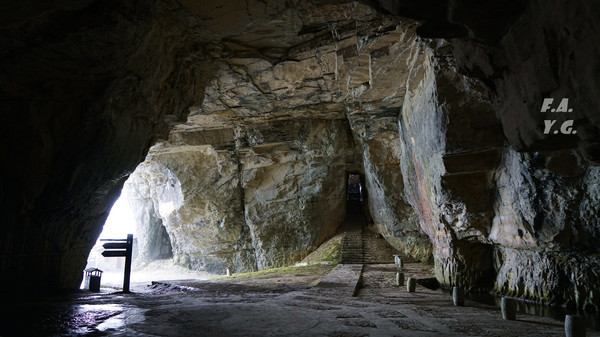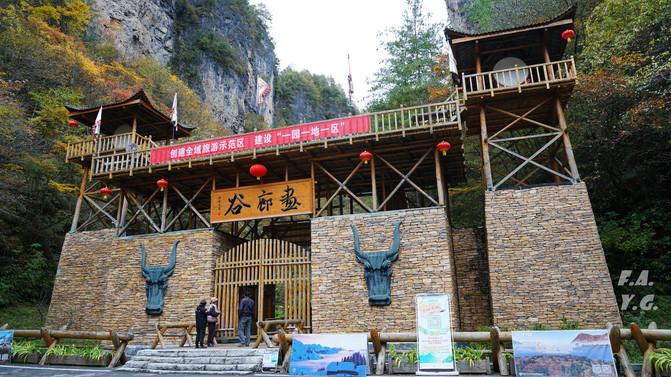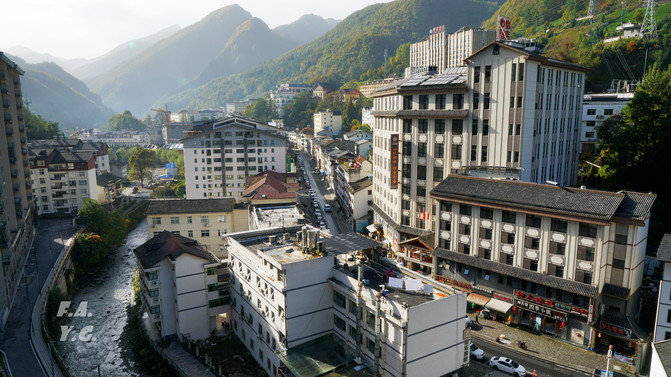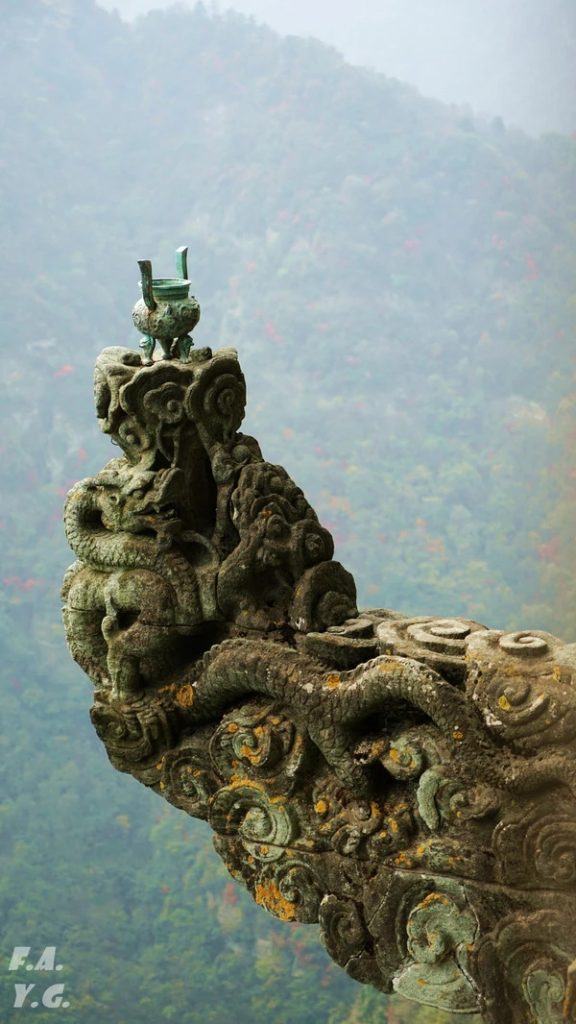
An 8-Day Journey to Shennongjia and Wudang Mountain
Introduction
Hey there, fellow travelers! Today, I’m excited to share with you an amazing 8-day journey I took with my friends in October. We explored the primitive and mysterious Shennongjia and the prestigious Wudang Mountain in Hubei, China. The total cost per person was around 2800 yuan, and we enjoyed photography, free travel, and hiking along the way.
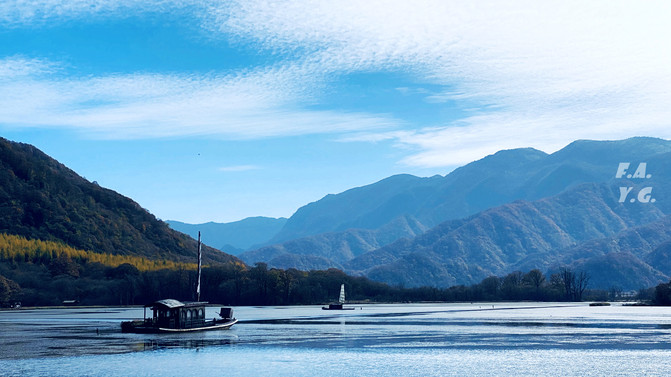
Flight Information
We took the Spring Airlines flight from Shanghai to Wudangshan Airport in Shiyan, Hubei. It’s the only direct flight from Shanghai to Wudang Mountain. The flight number for the outbound journey was 9C8723 (14:05 – 16:30), and for the return journey, it was 9C8724 (20:40 – 22:55). Note that the flight times may change with the seasons, usually in late March and late October.
The ticket price was quite reasonable. On non – holiday days, the official price on the Spring Airlines website was about 450 yuan (including a 50 – yuan airport construction fee). Each ticket only included 7 kilograms of carry – on luggage. If you need to check in luggage, it’s cheaper to buy the checked – luggage allowance online in advance. It starts at 50 yuan for 5 kilograms, and an additional 50 yuan for every additional 5 kilograms.
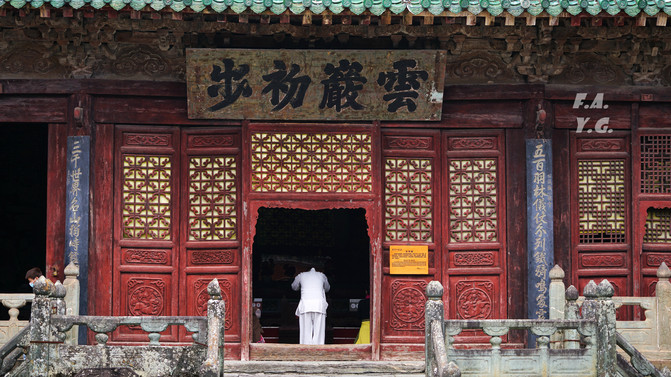
Itinerary
Shennongjia
Shennongjia Forestry District is vast and full of natural and cultural treasures. It’s divided into several major tourist areas:
– Bataoyuan Scenic Area: It’s the north gate of Shennongjia, connecting it with Wudang Mountain. Here, you can enjoy natural scenery like primitive forests and alpine lakes, as well as leisure facilities such as forest cabins, RV camping bases, and water parks.
– Tianyan Scenic Area: With a focus on primitive forests, it’s home to many national key – protected plants and animals.
– Hongping Scenic Area (Hongping Gallery Valley): The valley is lined with strange peaks on both sides, and rare Chinese herbal medicines can be found everywhere. It’s said to be the place where Shennongjia built wooden ladders to collect herbs, and the ancient Shennong Ladder is still preserved.
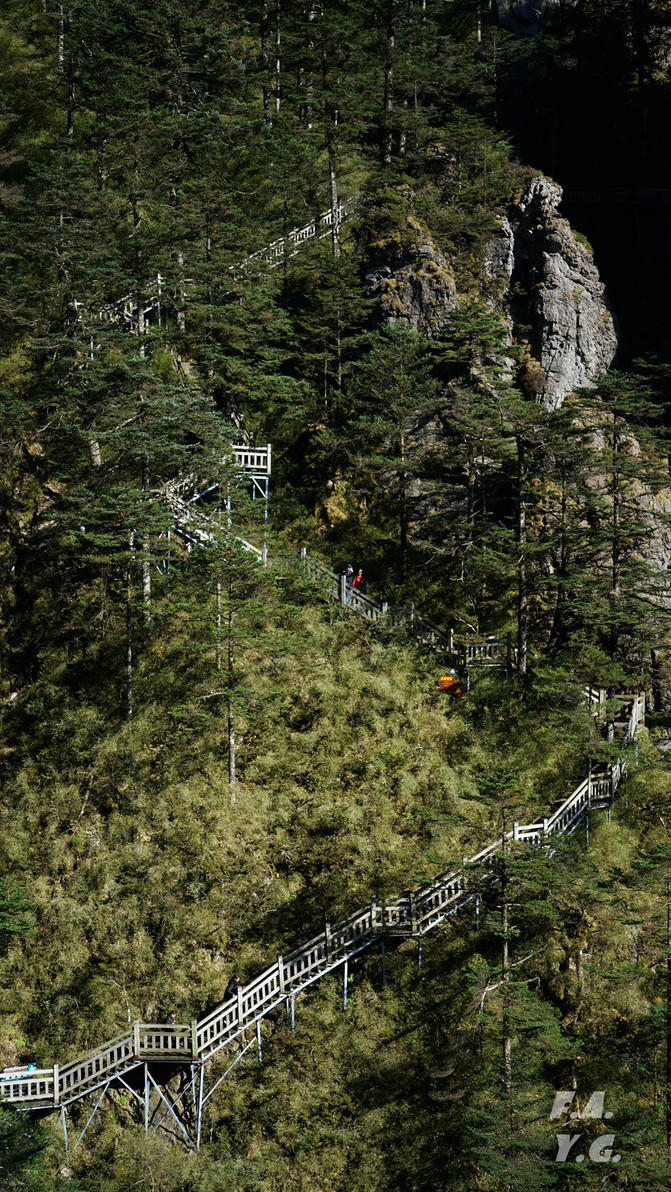
– Xiangxiyuan Scenic Area, Tianshengqiao, Shennongtan, and Guanmenshan: These areas are under the jurisdiction of Muyu Town, the southern gate of Shennongjia and the area with the best tourism facilities. Xiangxiyuan is the source of the Xiangxi River, where it’s said that Wang Zhaojun dropped pearls into the water, making it fragrant. Tianshengqiao features a natural cave, waterfalls, and a stone bridge. Shennongtan is a cultural and natural scenic area dedicated to Shennong. Guanmenshan is a large ecological science – popularization scenic area with many plant and animal displays.
– Shennongding Scenic Area: It’s the most primitive part of Shennongjia, with the highest peak, Shennongding, at an altitude of 3106.2 meters, known as the “Roof of Central China”.
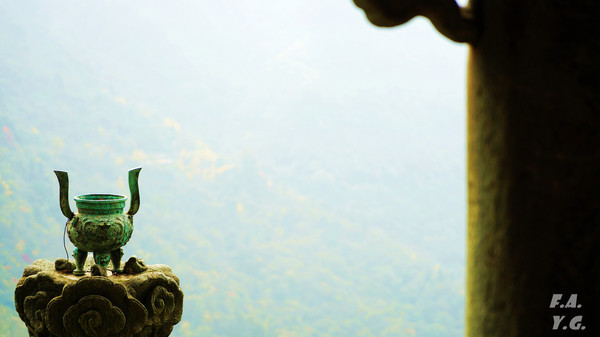
– Dajiuhu Scenic Area: Also known as Jiuhuping, it’s an alpine plain and a wetland, located at the westernmost end of Shennongjia.
During the “Enjoy Hubei” free – ticket activity (which lasted until December 31, 2020), all A – level scenic spots in Hubei were free of charge, but transportation fees such as environmental – protection buses and cable cars in the scenic areas were still required. Except for Dajiuhu, you can drive in other Shennongjia scenic areas. For Dajiuhu, you must take the environmental – protection bus at a cost of 60 yuan per person.
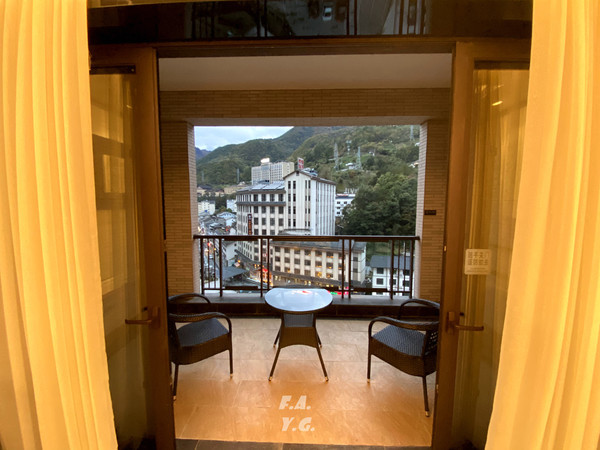
Our 4 – day itinerary in Shennongjia was as follows:
– Day 1: Tianyan Scenic Area and Hongping Gallery Valley. We didn’t enter Bataoyuan and stayed in Muyu Town. The accommodation near Tianyan and Hongping was not very good, so we drove an hour to Muyu Town.
– Day 2: Xiangxiyuan, Tianshengqiao, and Shennongtan. We skipped Guanmenshan and still stayed in Muyu Town. This was the easiest day of the Shennongjia trip as the attractions were close to each other.
– Day 3: Shennongding Scenic Area. We stayed in Pingqian Ancient Town in Dajiuhu. It was a tiring day with a long journey. After touring Shennongding, we went to Dajiuhu to stay for the next day’s visit.
– Day 4: Dajiuhu Scenic Area. In the evening, we headed back and stayed in Fangxian County. It was a wise decision to stay in Fangxian as it was in the middle between Shennongjia and Wudang Mountain.
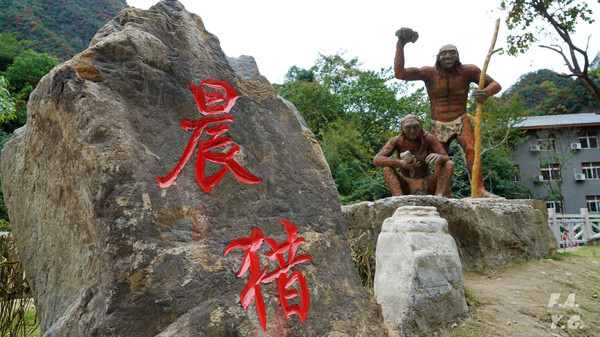
Wudang Mountain
Wudang Mountain is relatively easier to plan. We spent two days here.
– Important Spots: Taizipo, Xiaoyao Valley, Zixiao Palace, Nanyan Palace, Qiongtai Middle Temple, Taihe Palace, Golden Hall, and Yuxu Palace at the foot of the mountain. If you’re short on time, it’s recommended to visit Taizipo, Nanyan Palace, and take the cable car to the Golden Summit. Note that the tickets for the Golden Summit (27 yuan) and Zixiao Palace (15 yuan) are not included in the scenic – area ticket and are not part of the free – ticket activity.
– Scenic – Area Transportation: There are unified environmental – protection buses in the scenic area, and private cars are not allowed. You can park your car at the parking lot at the entrance of the scenic area. The environmental – protection bus costs 105 yuan (including a 5 – yuan insurance fee). The bus routes form a large “Y” shape, with three main lines starting from the tourist center.
Our 2 – day itinerary in Wudang Mountain was:
– Day 1: Taizipo, Zixiao Palace, and Nanyan Palace. We stayed in Nanyan. Xiaoyao Valley was closed at that time.
– Day 2: We climbed to the Golden Summit on foot from Nanyan, passing by Langmei Temple, Huanglong Cave, Chaotian Palace, and other places. Then we took the cable car down to Qiongtai Middle Temple and left the scenic area by environmental – protection bus.
Accommodation
We stayed in six hotels or guesthouses during the 8 – day trip. Here are three recommended ones:
– Kangdi Junlan Hotel (Muyu Town, Shennongjia): It’s the best – equipped hotel in Muyu Town. The rooms are spacious, about 60 square meters, with balconies. The price for a superior room with double breakfast is around 700 yuan, and for a deluxe room with double breakfast, it’s around 800 yuan. The only difference between them is the floor.
– Full – Season Hotel (Fangxian County): It’s a chain business hotel with a consistent standard. The rooms are simple, fashionable, and spacious, with a separate dry – wet area and strong shower water. The price is usually around 200 yuan per night.
– Dayue Yuansu (in Wudang Mountain Scenic Area): Located in Nanyan, next to the environmental – protection bus terminal. I really love its duplex rooms, especially the tea – drinking area prepared for tea lovers. The hotel also provides purified water, tea, melon seeds, and snacks. The room rate is over 1500 yuan per night, including 4 breakfasts, which is about 800 yuan per room after calculation. Non – duplex rooms range from 500 to 800 yuan.
Highlights of the Journey
Shennongjia
- Tianyan Scenic Area: It consists of Tianmenya and Yanziya. When we reached Tianmenya, it started to rain, and the temperature dropped suddenly. Tianmenya often has clouds and fog on cloudy days, giving it a mysterious atmosphere. There’s a Chinese Human – shaped Animal Scientific Research Exhibition Hall here. Most of the attractions are in Yanziya. The Yanziya wooden circular trail is built along the mountain. The famous Rainbow Bridge (Feiyundu) spans across the gap of Yanziya. It’s the highest – altitude landscape bridge in Asia, and it has a unique up – and – down elasticity.
- Hongping Gallery Valley: It’s a canyon in the primitive forest, about ten kilometers from Tianyan Scenic Area. The scenery here is like a beautiful painting, especially in autumn when the leaves turn various colors. The narrow stone lane with 499 steps is called “One – Line Sky”. There are also many small waterfalls in the valley, making it a great place to enjoy nature.
- Shennongtan: It’s a place to commemorate Shennong, the ancestor of the Chinese nation. The Shennong statue in the altar is solemn. There’s also a thousand – year – old Chinese fir, known as the “King of Chinese Firs”, which is so thick that six people can hardly hug it.
- Tianshengqiao: The scenic area is famous for its strange caves, bridges, waterfalls, and pools. The Huangyan River flowing through here has eroded a natural cave over thousands of years, forming a natural bridge. The waterfall here is magnificent, and the clear stream is very charming.
- Shennongding Scenic Area:
- Jinhouling: It’s a representative area of the primitive forest in Shennongjia, a protected area for golden monkeys and other rare animals. Although it’s possible to see golden monkeys, we didn’t have the chance this time.
- Shennonggu: With an altitude of 2820 meters, it has a 4398 – meter U – shaped wooden walking trail. The whole journey involves going down and then up about 258 meters, with about 4000 steps each way. The scenery in the valley is ever – changing, and the air is fresh.
- Dajiuhu Scenic Area: It’s a high – altitude wetland surrounded by mountains. The best times to view the scenery are in the early morning and at sunset. However, we couldn’t get up early to see the morning mist. The area used to have residents, but they were relocated to protect the environment. Now, tourists stay in Pingqian Ancient Town.
Wudang Mountain
- Wudang Museum: Before climbing the mountain, visiting the museum is a great idea. You can see a 1 – ton copper statue of Zhang Sanfeng, a 15 – gram golden dragon from the first year of Jianwen in the Ming Dynasty, and other precious cultural relics.
- Yuxu Palace: It was the base camp during the large – scale construction of Wudang Mountain in the Ming Dynasty. Although it has been damaged over time, its grand scale can still be felt. The four stele pavilions with huge steles carried by Bixi are very imposing.
- Nanyan Palace: It’s a perfect combination of human and natural landscapes. The buildings here are ingeniously built on the cliff, reflecting the Taoist idea of “harmony between man and nature”. The famous Dragon Head Incense is a highlight. It used to be very dangerous for pilgrims to climb up to offer incense, but now it’s prohibited.
- Taizipo (Fuzhenguan): Built on a 60 – degree slope, it’s also known as Taizipo. The Taizi Hall at the highest point of the temple houses a copper statue of the young prince (the former identity of Zhenwu Emperor) reading. The red – walled corridor, known as the “Nine – Bend Yellow River Wall”, is very unique. The “One – Pillar and Twelve – Beam” structure in the Wuyun Tower is a remarkable architectural feat.
- Zixiao Palace: Surrounded by mountains and facing water, it’s a place with excellent feng shui. It’s the ninth of the 72 blessed places in Chinese Taoism. The main hall, Zixiao Hall, is a well – preserved wooden structure with a magnificent interior. It was also the headquarters of the Red Army’s Third Corps in 1931.
- Climbing to the Golden Summit: The ancient path from Nanyan to the Golden Summit is full of challenges. The Chaotian Palace is considered the boundary between the mortal world and the celestial world. We chose the Ming – Dynasty ancient path, which is more difficult but has more important scenic spots like the Three Heavenly Gates, Huixian Bridge, and Pilgrimage Gate.
- Taihe Palace and Golden Hall: The Taihe Palace is built on the top of Tianzhu Peak, the highest peak of Wudang Mountain. The Golden Hall is a pure – copper gilded building, weighing 90 tons and using 360 kilograms of gold. It has three amazing phenomena: “The Patriarch Sweating”, “The Sea Horse Spitting Mist”, and “Thunder and Fire Refining the Hall”. Standing on the Golden Summit, you can enjoy the beautiful scenery of Wudang Mountain.
- Qiongtai Middle Temple: Opposite the temple, there are two thousand – year – old ginkgo trees that have witnessed the rise and fall of Wudang Mountain. The Qiongtai Temple complex used to be very large, but now only the middle temple is well – preserved. The Sanqing Hall inside houses many precious cultural relics.

This journey to Shennongjia and Wudang Mountain was truly unforgettable, filled with beautiful scenery, rich culture, and challenging adventures. I hope my sharing can inspire you to embark on your own journey to these amazing places!



